Website of R. Harald Baayen
Professor of Quantitative Linguistics
Software
WpmWithLdl_1.0.tar.gz : R package implementing word and paradigm morphology with linear discriminative learning. Linear mappings from orthographic/phonological space to semantic space and from semantic space to orthographic/phonological space are implemented, and exemplified for Latin verb paradigms. The package is introduced in detail in Baayen, R. H., Y-Y Chuang, and Blevins, J. P. Inflectional morphology with linear mappings. To appear in The Mental Lexicon, 2018. pdf
acousticNDLCodeR: Coding Sound Files for Use with NDL. Make acoustic cues to use with the R packages 'ndl' or 'ndl2'. The package implements functions used in the PLOS ONE paper: Denis Arnold, Fabian Tomaschek, Konstantin Sering, Florence Lopez, and R. Harald Baayen (2017). Words from spontaneous conversational speech can be recognized with human-like accuracy by an error-driven learning algorithm that discriminates between meanings straight from smart acoustic features, bypassing the phoneme as recognition unit. PLOS ONE 12(4):e0174623. More details can be found in the paper and the supplement. 'ndl' is available on CRAN. 'ndl2' is available by request from konstantin.sering@uni-tuebingen.de.
The R package itsadug (Jacolien van Rij, Martijn Wieling, R. Harald Baayen, & Hedderik van Rijn (2015). itsadug: Interpreting Time Series and Autocorrelated Data Using GAMMs. R package version 0.8.) provides a range of functions facilitating the visualization and evaluation of generalized additive mixed models fit with the mgcv package of Wood (2006, 2011). [see how to install].
ndl (Naive Discriminative Learning): Naive discriminative learning (2015) implements learning and classification models based on the Rescorla-Wagner equations and their equilibrium equations.
The languageR package, see Baayen, R. H. (2008). Analyzing Linguistic Data. A Practical Introduction to
Statistics Using R, Cambridge University Press, provides datasets and some R-functions that facilitate statistical analysis. The languageR package has some added functionality that is not documented in the above mentioned book. The following code illustrates the basic functionality of plotLMER.fnc, a function for graphing the partial effects of fixed-effect factors and covariates of mixed-effects models created with lmer() from the lme4 package. It is possible to customize individual panels, to plot splines, and to visualize two-way interactions. For details, please consult the documentation (?plotLMER.fnc).

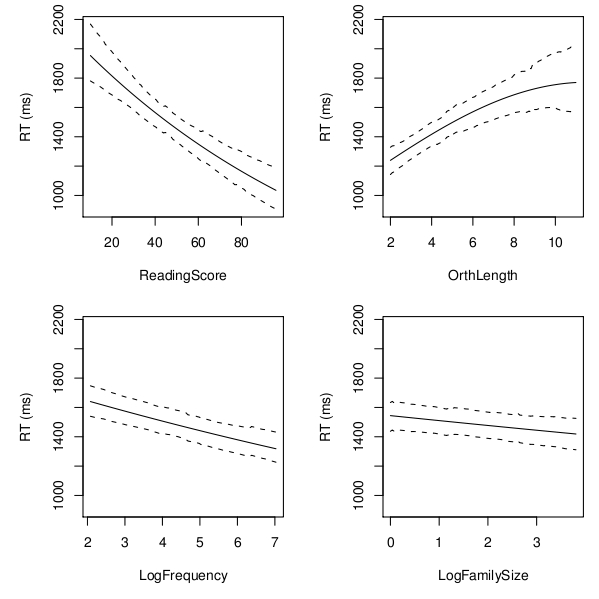
The function acf.fnc is useful for exploring autocorrelational structure in successive trails in tasks such as lexical decision and naming.
> library(languageR)
> acf.fnc(beginningReadres, x="LogRT")
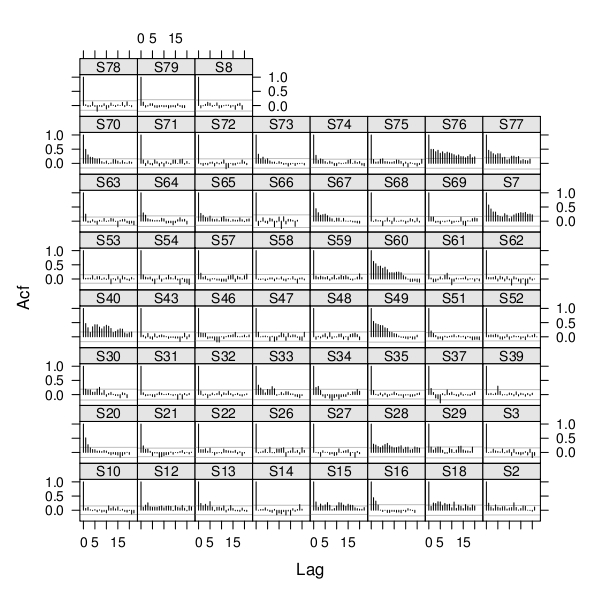
Each panel represents a subject (primary school children), and displays the autocorrelation function for that subject. For some readers, response latencies at lag 20 are still correlated.
R code for complexity-based ordering as discussed in Plag and Baayen, Language, 2009 is available here. The data set for this code is available here. If code and data file are available in the current working directory, the following lines of R code produces the graphs shown below.
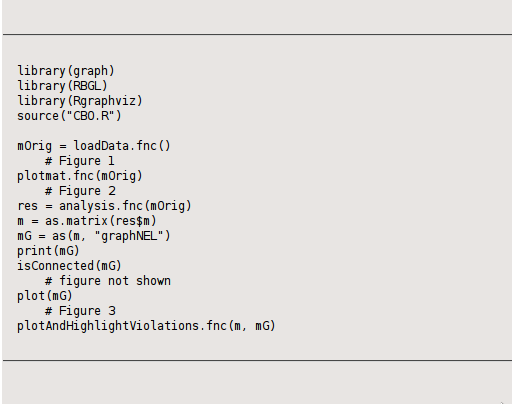
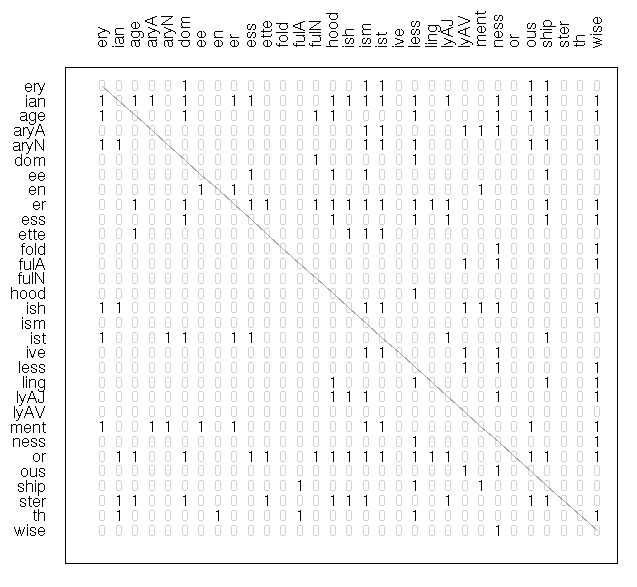
Figure 1: the unordered adjacency matrix
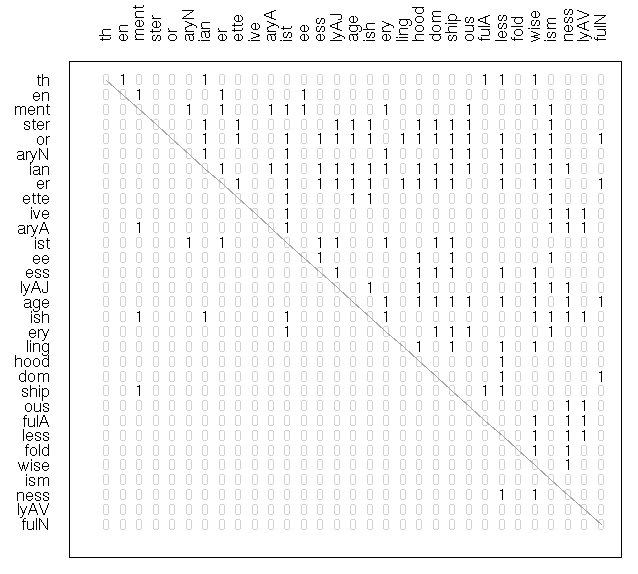
Figure 2: the same adjacency matrix for complexity-based ordering
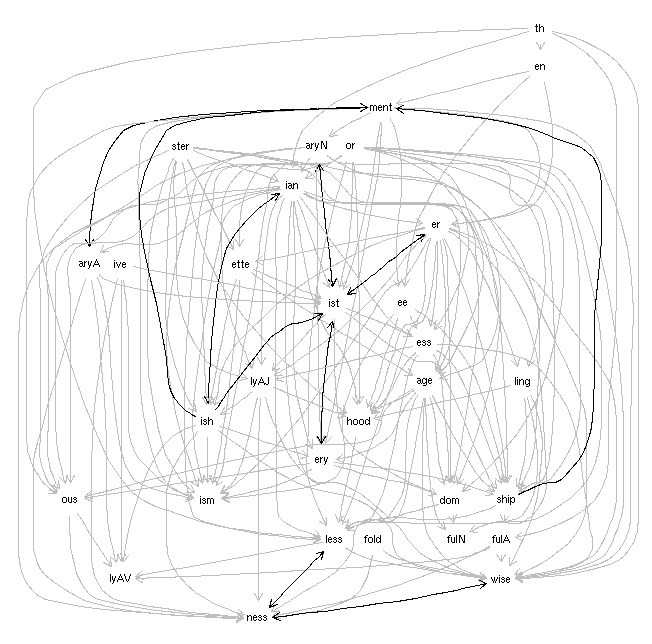
Figure 3: the corresponding directed graph for complexity-based ordering

